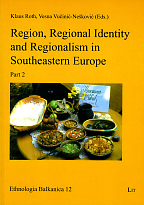Trans-border Exchange of Seasonal Workers in the Central Regions of the Balkans (19th – 20th Century)
Trans-border Exchange of Seasonal Workers in the Central Regions of the Balkans (19th – 20th Century)
Author(s): Petko HristovSubject(s): Anthropology
Published by: LIT Verlag
Keywords: labour migration; 19th–20th century; Balkans;
Summary/Abstract: This is a historical overview of the destinations preferred by builders (dung’geri) coming from the central parts of the Balkan Peninsula. Before the year 1878 the major routes led to both Istanbul as the capital of the Ottoman Empire and to autonomous Serbia and Wallachia. After the liberation of Bulgaria, its new capital Sofia turned into an attractive centre for all the earners (pečalbari) from the regions of Western Bulgaria, Eastern Serbia, and Macedonia. The annual journeys of men from the central parts of the Balkans “for work” or “for gain” (pečalba) over years developed specific features of the ritual system and the folklore of the villages of these regions. The paper presents both the transformations of local societies and the formation of trans-border communities in the modernized city. The century-old model of seasonal labour migration from the centre of the Balkans was reversed during the second half of twentieth century, when temporary migrants from former Yugoslavia settled down permanently in Western Europe, America, and Australia with their families. These changes, as well as the entry of Bulgaria into the EU, have led to the depletion of entire villages in the regions under scrutiny.
Journal: Ethnologia Balkanica
- Issue Year: 2008
- Issue No: 12
- Page Range: 215-230
- Page Count: 16
- Language: English
- Content File-PDF

